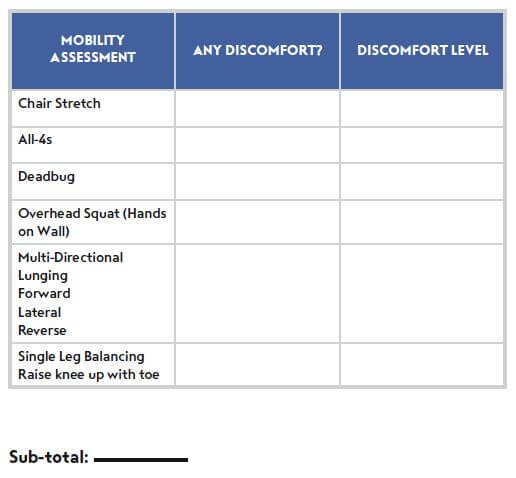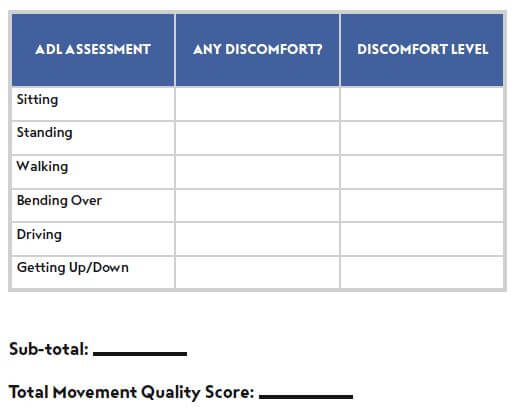Exercises for Sciatica is the complete program for stronger muscles, relief from pain and renewed energy. As lifestyles become more and more sedentary, cases of sciatica become more common—which is why a complete lifestyle overhaul, one which includes targeted exercise routines aimed at easing sciatica symptoms—is required to help individuals with this condition live their lives pain-free.
Authors William Smith, MS, and Wazim Buksh, MD, wrote Exercises for Sciatica to work as an integrated part of any sciatic or piriformis syndrome treatment plan, optimizing mobility, increasing strength and minimizing pain, while providing lifestyle tips to keep one motivated and moving forward.
SETTING BENCHMARKS
In selecting the perfect exercises to aid in both general and targeted sciatica improvement, adopting a comprehensive movement approach is paramount. But first, setting up benchmarks for mobility, physical strength and activities of daily living (ADLs) needs to be done first by self-assessment.
Based upon the outcome of the following assessments, recommendations can be made for where your focus should be during your workouts. These assessments are based on the general principles of the joint-by-joint theory, a movement approach popularized by leaders in the strength and conditioning field.
By offering an initial assessment using mobility, physical strength, and ADLs as benchmarks, then scoring against a broad, simple baseline, you can re-assess using easily accessible, low-cost methods to determine areas needing improvement.
Feel/observe any pain in the lower back. This indicates to avoid a range of motion beyond neutral, particularly if such movement has not been recently cleared by a medical professional.
ASSESSMENT SCORING
Complete each assessment one time. Note any discomfort or difficulty you experience. Rate your level of discomfort on a scale of 0–3. A score of 0 indicates pain severe enough to prohibit performing the movement. A score of 1 indicates pain which allows you to attempt, but not complete, the movement. A score of 2 indicates that you were able to complete the movement, but not without difficulty. Finally, a score of 3 indicates your ability to complete the movement without difficulty.
Mobility Assessment
Physical Strength Assessment
Activities of Daily Living Assessment
After completing each of the assessments, determine where you may want to focus your attention. Note that if you experience pain—particularly any sharp, shooting, pain—that doesn’t go away, it’s highly recommended that you consult with your primary care provider.
Re-assess every 4 months once your assessments are complete. Following the movement quality programs included in Exercises for Sciatica can assist in identifying areas of needing physical improvements while recognizing the nature of addressing the whole person in healing and well-being. Check out our book Exercises for Sciatica for more information.
WILLIAM SMITH, MS, NSCA, CSCS, MEPD, completed his B.S. in exercise science at Western Michigan University followed by a master’s degree in education and a post-graduate program at Rutgers University. In 1993, Will began coaching triathletes and working with athletes and post-rehab clientele. Will has advanced specialty certifications in cancer, post-rehab exercise and athletic development.
WAZIM BUKSH, MD, MPH, CAQSM, is board certified in both sports medicine and internal medicine. He currently practices both specialties as the lead physician for Primary Care at Novartis, an Atlantic Health System’s practice, in New Jersey. He has worked with the New York Jets and the athletic departments of Seton Hall and Drew Universities, respectively.








